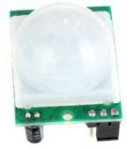I am trying to invert the output from a PIR into a Picaxe input, because the normal PIR output goes high when triggered, but I want the opposite, go low when triggered. I want this arrangement so if the unit gets damaged it leaves a defaul high into the Picaxe


My problem is when I connect the output of the PIR inti the inverter circuit the PIR keeps cycling high/low. I found with a meter that the PIR output when high it's 3.27 volts, but when connected to my inverter circuit it drops to 1.75 volts. Am I doing something wrong?


My problem is when I connect the output of the PIR inti the inverter circuit the PIR keeps cycling high/low. I found with a meter that the PIR output when high it's 3.27 volts, but when connected to my inverter circuit it drops to 1.75 volts. Am I doing something wrong?

